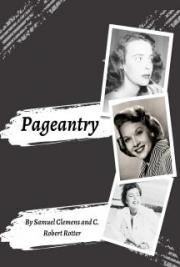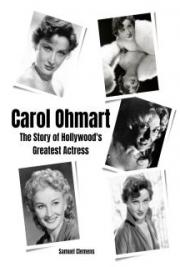XXII. In Conclusion
The subsequent history of the ill-fated Cheyenne and Arapahoe Cattle Company is easily told. Over ninety per cent of the cattle moved under the President's order were missing at the round-up the following spring. What few survived were pitiful objects, minus ears and tails, while their horns, both root and base, were frozen until they drooped down in unnatural positions. Compared to the previous one, the winter of 1885-86, with the exception of the great January blizzard, was the less severe of the two. On the firm's range in the Cherokee Strip our losses were much lighter than during the previous winter, owing to the fact that food was plentiful, there being little if any sleet or snow during the latter year. Had we been permitted to winter in the Cheyenne and Arapahoe country, considering our sheltered range and the cattle fully located, ten per cent would have been a conservative estimate of loss by the elements. As manager of the company I lost five valuable years and over a quarter-million dollars. Time has mollified my grievances until now only the thorn of inhumanity to dumb beasts remains. Contrasted with results, how much more humane it would have been to have ordered out negro troops from Fort Reno and shot the cattle down, or to have cut the fences ourselves, and, while our holdings were drifting back to Texas, trusted to the mercy of the Comanches.
I now understand perfectly why the business world dreads a political change in administration. Whatever may have been the policy of one political party, the reverse becomes the slogan of the other on its promotion to power. For instance, a few years ago, the general government offered a bounty on the home product of sugar, stimulating the industry in Louisiana and also in my adopted State. A change of administration followed, the bounty was removed, and had not the insurance companies promptly canceled their risks on sugar mills, the losses by fire would have been appalling. Politics had never affected my occupation seriously; in fact I profited richly through the extravagance and mismanagement of the Reconstruction régime in Texas, and again met the defeat of my life at the hands of the general government.
With the demand for trail cattle on the decline, coupled with two severe winters, the old firm of Hunter, Anthony & Co. was ripe for dissolution. We had enjoyed the cream of the trade while it lasted, but conditions were changing, making it necessary to limit and restrict our business. This was contrary to our policy, though the spring of 1886 found us on the trail with sixteen herds for the firm and four from my own ranches, one half of which were under contract. A dry summer followed, and thousands of weak cattle were lost on the trail, while ruin and bankruptcy were the portion of a majority of the drovers. We weathered the drouth on the trail, selling our unplaced cattle early, and before the beef-shipping season began, our range in the Outlet, including good will, holding of beeves, saddle horses, and general improvements, was sold to a Kansas City company, and the old firm passed out of existence. Meanwhile I had closed up the affairs ofthe Cheyenne and Arapahoe Company, returning a small pro rata of the original investment to shareholders, charging my loss to tuition in rounding out my education as a cowman.
The productive capacity of my ranches for years past safely tided me over all financial difficulties. With all outside connections severed, I was then enabled to give my personal attention to ranching in Texas. I was fortunate in having capable ranch foremen, for during my almost continued absence there was a steady growth, together with thorough management of my mixed cattle. The improved herd, now numbering over two thousand, was the pride of my operations in live stock, while my quarter and three-eighths blood steers were in a class by themselves. We were breeding over a thousand half and three- quarters blood bulls annually, and constantly importing the best strains to the head of the improved herd. Results were in evidence, and as long as the trail lasted, my cattle were ready sellers in the upper range markets. For the following few years I drove my own growing of steers, usually contracting them in advance. The days of the trail were numbered; 1889 saw the last herd leave Texas, many of the Northern States having quarantined against us, and we were afterward compelled to ship by rail in filling contracts on the upper ranges.
When Kansas quarantined against Texas cattle, Dodge was abandoned as a range market. The trail moved West, first to Lakin and finally to Trail City, on the Colorado line. In attempting to pass the former point with four Pan-Handle herds in the spring of 1888, I ran afoul of a quarantine convention. The cattle were under contract in Wyoming, and it was my intention not even to halt the herds, but merely to take on supplies in passing. But a deputation met us south of the river, notifying me that the quarantine convention was in session, and requesting me not to attempt to cross the Arkansas. I explained that my







